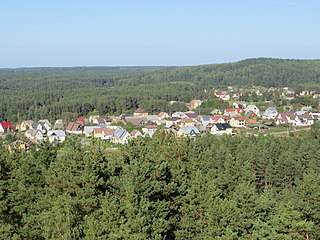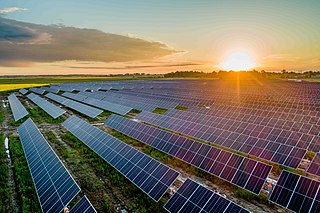
Demographic features of the population of Lithuania include population density, ethnicity, level of education, health, economic status, and religious affiliations.

Daugavpils is a state city in southeastern Latvia, located on the banks of the Daugava River, from which the city derives its name. The parts of the city to the north of the river belong to the historical Latvian region of Latgale, and those to the south lie in Selonia. It is the second-largest city in the country after the capital Riga, which is located some 230 kilometres northwest and is the ninth most populous city in the Baltic states.

Neringa or Neringa Municipality is a municipality of Klaipėda County in westernmost Lithuania, comprising several villages in the Curonian Spit. In terms of population, it is the smallest municipality of the country. Nida is the seat of government and largest town in Neringa Municipality.

Vilnius County is the largest of the 10 counties of Lithuania, located in the east of the country around the city Vilnius and is also known as Capital Region or Sostinės regionas by the Lithuanian statistics department and Eurostat. On 1 July 2010, the county administration was abolished, and since that date, Vilnius County remains as the territorial and statistical unit.

Klaipėda County is one of ten counties in Lithuania, bordering Tauragė County to the southeast, Telšiai County to the northeast, Kurzeme in Latvia to the north, and Kaliningrad Oblast in Russia to the south. To the west is the Baltic Sea. It lies in the west of the country and is the only county to have a coastline and not be landlocked. Its capital is Klaipėda. On 1 July 2010, the county administration was abolished, and since that date, Klaipėda County remains as the territorial and statistical unit.

The Ignalina Nuclear Power Plant is a decommissioned two-unit RBMK-1500 nuclear power station in Visaginas Municipality, Lithuania. It was named after the nearby city of Ignalina. Due to the plant's similarities to the infamous Chernobyl Nuclear Power Plant in both reactor design and lack of a robust containment building, Lithuania agreed to close the plant as part of its agreement of accession to the European Union. Unit 1 was closed in December 2004; Unit 2 in December 2009. The plant accounted for 25% of Lithuania's electricity generating capacity and supplied about 70% of Lithuania's electrical demand. It was closed on December 31, 2009. Proposals have been made to construct a new nuclear power plant at the site, but such plans have yet to come to fruition.

Šalčininkai is a city in Vilnius County, Lithuania, situated south-east of Vilnius, near the border with Belarus.

Russians in the Baltic states is a broadly defined subgroup of the Russian diaspora who self-identify as ethnic Russians, or are citizens of Russia, and live in one of the three independent countries — Estonia, Latvia, and Lithuania — primarily the consequences of the USSR's forced population transfers during occupation. As of 2023, there were approximately 887,000 ethnic Russians in the three countries, the year of the last census during the 1944–1991 Soviet occupation of the three Baltic countries.

Ignalina is a city in eastern Lithuania. It is known as a tourist destination in the Aukštaitija National Park. Ignalina is also famous for the now decommissioned Ignalina Nuclear Power Plant in nearby Visaginas.

Antanas Sniečkus was a Lithuanian communist politician who served as the First Secretary of the Communist Party of Lithuania from 15 August 1940 to 22 January 1974.
Russians in Lithuania number about 146,000 people, according to the Lithuanian estimates of 2023, or 5.1% of the total population of Lithuania.

Pabradė is a city in eastern Lithuania, in Švenčionys district municipality, on Žeimena river, 38 km south-west of Švenčionys.

Rūdiškės is a town in the Trakai district municipality, Lithuania about 15 km south of Trakai.

Visaginas Nuclear Power Plant was a planned nuclear power plant project in Lithuania. It was proposed to be built at the site of the closed Ignalina Nuclear Power Plant, which was shut down on 31 December 2009 in accordance with Lithuania's accession agreement to the European Union. The two reactors of the Ignalina plant are currently undergoing a decommissioning process.

Lithuania is a net energy importer. In 2019 Lithuania used around 11.4 TWh of electricity after producing just 3.6 TWh.

The Visaginas Municipality is one of the 60 municipalities of Lithuania, situated in the north-east of the country. It consists of the city of Visaginas, 16 villages (kaimai) and one farmstead (viensėdis).

An advisory referendum on the construction of a new nuclear power station was held in Lithuania on 14 October 2012, alongside parliamentary elections. The proposal was rejected by 65% of voters.





























